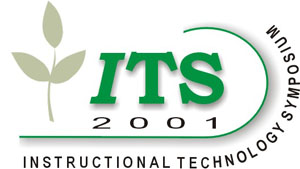Plant disease epidemics impact U.S. Agriculture each year by affecting the quantity and quality of food and fiber products. Production costs increase when commercial fungicides and other pesticides are used to stabilize production and insure a continuing food supply. Each type of plant disease pathogen, and the epidemic it causes, has its own unique biology and dynamics. The science of understanding of these factors is called Botanical Epidemiology. The more we study and understand these important epidemics, the better prepared we can be to control or manage the impact. Commercial farmers, as well as home gardeners, are faced each year with making timely decisions about the effective and economical application of fungicides and other tactics to control plant diseases. The North American Plant Disease Forecast Center located at North Carolina State University in Raleigh, NC is providing Internet support to growers by forecasting the geographic spread of certain diseases. Two classical fungal diseases we work with are tobacco blue mold (Peronospora tabacina Adam) and cucurbit downy mildew (Pseudoperonospora cubensis). During cool, wet and cloudy weather, both pathogens increase by producing copious quantities of microscopic infectious units called spores (conidia) which can be, and frequently are, (disseminated) transported both locally and long distance via atmospheric wind currents. Using the principles and methods of a related science called "Aerobiology," we are able to track these spores in the atmospheric boundary layer (ABL) and forecast the temporal and spatial spread of the epidemics. Examples A set of examples has been linked to this abstract page. The first image shows a generalized transport event of fungal spores being disseminated from an infected field to local and distant healthy target fields. Note the time and space dimensions of the transport event. Figures 1-4 provide actual, real-time events. Fig. 1 tobacco blue mold trajectory; Fig. 2 tobacco blue mold deposition to the ground surface; Fig. 3 cucurbit downy mildew trajectory; and Fig. 4 mountain cedar pollen trajectory from trees in Texas. Separate forecast URL’s and homepages are available for each problem. However, the methods of spatial and temporal analyses, biometeorology factors and risk assessment of each forecast are common to all three problems.Reporting and Issuing Forecasts A network of plant disease reporters located in the United States, as well as Mexico and Canada, report new outbreaks directly to the Forecast Center via the internet, providing valuable and timely information on the condition and strength of the source. Spore transport via the atmosphere then is calculated using the HY-SPLIT trajectory model provided by the NOAA Air Resources Laboratory (ARL) in Silver Spring, Maryland. The data of primary interest are the hourly ABL wind-field forecasts covering the entire North American continent. A trajectory is represented by a map plotting of the future atmospheric pathway of an air parcel likely to contain spores. In other words, it is a prediction of the spatial and temporal positions of a spore cloud center for the future 48 hrs following spore release from infected fields. A source strength threat and a trajectory risk are assigned to each forecast based upon the infected crop area, disease severity, and biometeorological conditions along the pathway during the future 48-hr. period.Additional Information The forecasts are science-based, practically oriented and educational in nature. Links with up-to-date information on fungicides application technologies and the pesticide industry contacts are included. Sections of the homepage go into considerable detail as to how the forecast and decision analysis systems operate. Educational material in the form of tutorials, in both English and Spanish, and terminology glossaries are included. There is even an Internet self-test to evaluate your comprehension of the information provided in the Forecasting Homepage. Several other features are accessable using the actual forecast homepages.A distance teaching section is now under construction providing the concepts, principles and methodologies used in the related sciences of epidemiology, aerobiology and biometerology. Archived forecasts for the past five years are to be used as realistic teaching examples. Our forecaster documents and summarizes the continental epidemics each year, providing first outbreaks by states, probable sources, and the associated weather and climatology analyses. If you have comments or suggestions to offer on our approach to forecasting plant diseases, please don't hesitate to contact the North American Disease Forecast Center. C.E. Main, Leader
Thomas Keever, Forecaster and Meterologist
Links to further information American Phytopathological Society
Physical Aerobiology (Online Journal)
Aerobiologia (Online Journal)
Aerobiologie/Aerobiology, Geographie/ Universite de Montreal, Canada
International Association for Aerobiology
Alliance for Aerobiology Research - AFAR
NCR - 148
NCR - 148 Movement and Dispersal of Biota
Pan-American Aerobiology Association
PAAA Aerobiology 2001 Conference
Useful weather links Intellicasthttp://www.intellicast.com Unisys Weather
UM Weather
html by Audrey Godshall, NCSU Plant Pathology End
|
